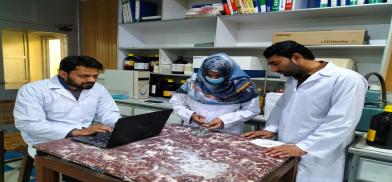Scientists in Pakistan develop low-cost anti-bacterial fabric with multiple uses
Speaking on the motivation behind the development, Majeed said the pandemic disrupted many imports, including medical supplies; so his team started exploring medical fabric with a focus on anti-bacterial material which could be sourced locally

Researchers in Pakistan have developed a low-cost antibacterial fabric that can be used in wound dressing, lab coats, masks and various types of packaging materials. This coating, results showed, is 85 per cent effective in killing bacterial patches and preventing them from further spreading to other parts.
The fabric, developed by Saadat Majeed, Associate Professor-Division of Analytical Chemistry at the Bahauddin Zakariya University in Multan, Pakistan, tested the eco-friendly Chitosan and silver nanoparticles modified fabric for four common types of bacteria. The research was also published in the prestigious science journal, Nature.
The researchers created the active sites of the invisible coat in a normal fabric by dipping it in silver nanoparticles and Chitosan – a type of sugar from crabs and lobsters.
“This coating has active antimicrobial properties and kills the bacterial strains immediately upon contact," Majeed was quoted as saying by The Express Tribune. Unlike fabric treated with costly chemicals, this is extremely cost-effective, he said.
Further results showed that the fabric treatment method has the potential to be used for hospital fabrics, masks, and food packaging materials. More specific trials are underway.
Speaking on the motivation behind the development, Majeed said the pandemic disrupted many imports, including medical supplies; so his team started exploring medical fabric with a focus on anti-bacterial material which could be sourced locally.
Regarding storage and shelf life, which is an important aspect of any anti-microbial fabric for its commercialization, they found that the fabric retained its quality from 8 to 12 weeks in adverse conditions.
(SAM)








Post a Comment